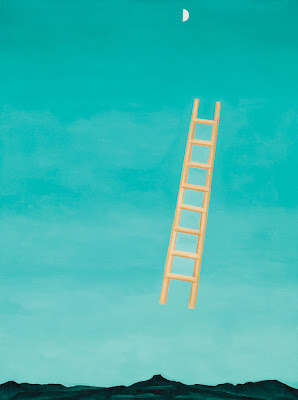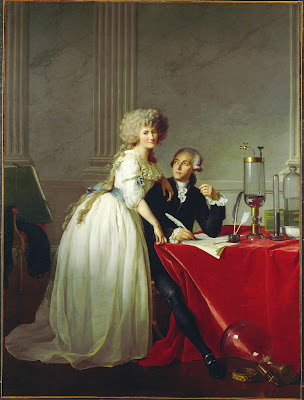Sunday, November 28, 2010
tension and resolution in music
Friday, November 26, 2010
ecstasy, then and now

Giovanni Bernini -
Wednesday, November 24, 2010
Monday, November 22, 2010
science and art
music as sexual display
origin of dance
other uses of art
Saturday, November 20, 2010
art and money

Yellow Resonance (1957)



invention of the photograph
Inspired by Baudelaire’s writings and the provocative realism of Edouard Manet, a motley group of young French painters decided to rebel. The camera, they believed, was a liar. Its precision was false. Why? Because reality did not consist of static images. Because the camera stops time, which cannot be stopped; because it renders everything in focus, when everything is never in focus. Because the eye is not a lens, and the brain is not a machine.
These rebels called themselves the impressionists. Like the film in a camera, their idiom was light. But the impressionists realized that light was both a dot and a blur. If the camera captured the dot, the impressionists represented the blur. They wanted to capture time in their paintings, showing how a bale of hay changes in the afternoon shadows, or how the smoke of a train leaving Gare Saint-Lazare slowly fades into thin air. As Baudelaire insisted, they painted what the camera left out.
Look, for example, at an early Monet, Impression: Soleil Levant (Impression:
- Jonah Lehrer
abstraction becomes the new realism
cooking is a science and an art
Wednesday, November 17, 2010
Monday, November 15, 2010
atonality through tonality
where science fails, art can succeed
A poem can be just as true and useful as the laboratory. While science will always be our primary method of investigating the universe, it is naive to think that science can solve everything by itself, or that everything can even be solved. One of the ironies of modern science is that some of its most profound discoveries like Heisenberg’s uncertainty principle*, or the emergent nature of consciousness are actually about the limits of science. As Vladimir Nabokov, the novelist, once put it, “The greater one’s science, the deeper the sense of mystery.”
We now know enough to know that we will never know everything. This is why we need art: it teaches us to how live with mystery. Only the artist can explore the ineffable without offering us an answer, for sometimes there is no answer. John Keats called this romantic impulse “negative capability.” He said that certain poets, like Shakespeare, had “the ability to remain in uncertainties, mysteries, doubts, without any irritable reaching after fact and reason.” Keats realized that just because something can’t be solved, or reduced into the laws of physics, doesn’t mean it isn’t real. When we venture beyond the edge of our knowledge, all we have is art.
But before we can get to this intersection, two existing cultures must modify their habits. First of all, the humanities must sincerely engage with the sciences. Henry James defined the writer as someone on whom nothing is lost; artists must heed his call and not ignore science’s inspiring descriptions of reality. Every humanist should read Nature.
At the same time, the sciences must recognize that their truths are not the only truths. No knowledge has a monopoly on knowledge. That simple idea will be the starting premise of any fourth culture. As Karl Popper, an eminent defender of science, wrote, “It is imperative that we give up the idea of ultimate sources of knowledge, and admit that all knowledge is human; that it is mixed with our errors, our prejudices, our dreams, and our hopes; that all we can do is to grope for truth even though it is beyond our reach. There is no authority beyond the reach of criticism.”
*This principle of quantum physics states that one can know either the position of a particle or its momentum (mass times velocity), but not both variables simultaneously. In other words, we Can’t know everything about anything.
- Jonah LehrerFriday, November 12, 2010
a tax collector and his wife
what his patrons wanted
Sunday, November 7, 2010
art of the 20th century

















.jpg)